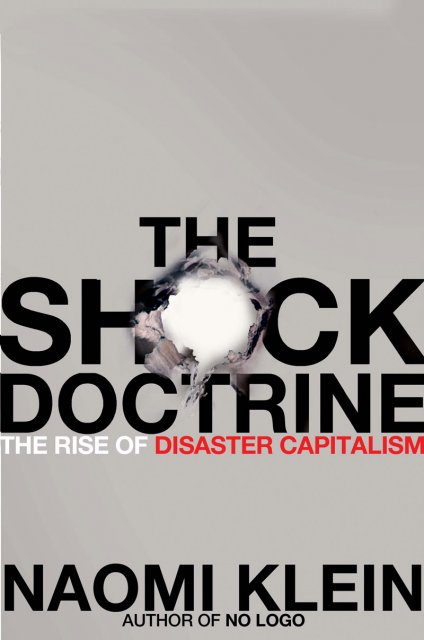 Given that the current ballot propositions have gone down in flames, then the state of California faces a brand-new budget crisis of some $21.3 billion. While obviously the Democratic leadership has focused their attention on trying to pass the ballot measures they thought represented the best possible compromise, I do hope that some thought has been given to what the new strategy will be on 5/20. Granted, the imperatives of political strategy mean that it's more than likely that there is a Plan B that's being kept under wraps at the Legislature, At the same time, however, it is vital that California Progressives come together to construct a stronger coalition and a winning strategy for the future of our state.
Given that the current ballot propositions have gone down in flames, then the state of California faces a brand-new budget crisis of some $21.3 billion. While obviously the Democratic leadership has focused their attention on trying to pass the ballot measures they thought represented the best possible compromise, I do hope that some thought has been given to what the new strategy will be on 5/20. Granted, the imperatives of political strategy mean that it's more than likely that there is a Plan B that's being kept under wraps at the Legislature, At the same time, however, it is vital that California Progressives come together to construct a stronger coalition and a winning strategy for the future of our state.
One potentially hopeful sign is that it appears that California may seek some sort of Federal bailout, either in the form of Federal fiscal aid or in Federal guarantees for California's bonds. The danger that progressives have pointed to is the possibility that Gov. Schwarzenegger will use this crisis to push for additional spending cuts, deregulation of environmental and labor protections, and other regressive pet projects.
Obviously, this would be catastrophic, both for California and for the nation. The Obama Administration must resist the Governor's request for "the right to make the cuts we need" - if for no other reason than pure self-interest. There is nothing to be gained from placating a Governor who has no political future in his or any other party, whose approval ratings are through the floor, whose administration has become a byword for failure, and who has nothing to offer the administration. Obama's political and policy interests converge in a successful economic recovery achieved through Keynesian stimulus; his interests in a California bailout would be to ensure that the Largest state in the Union and the world's 10th largest economy does not become a massive deflationary weight on the American economy. Acceding to further spending cuts, further job losses and furloughs, and especially to programs like Medi-Cal that benefit the poorest Californians (who as Keynesian theory reminds us have the greatest "marginal propensity to consume") would only serve to damage his own stimulus plan and slow the pace of recovery.
California Progressives at every level, from Senator Boxer on down to the Party Central Committees, local grassroots groups, and veterans of his 2008 campaign should absolutely lobby the President to ensure that any bailout is conditional on A. a reversal of prior cuts and firings and a commitment to pro-stimulatory policy, and B. Schwarzenegger's commitment to signing a new majority-vote budget written up solely by Democrats using the "Steinberg maneuver."
However, even this victory would be a mere cauterizing of the wound. If nothing else, the defeat of the May 19th propositions must show all members of the Progressive coalition that we cannot continue on the current path of division and drift - we must unify around a comprehensive strategy for confronting the crisis of governance once and for all in 2010, a new way forward.
To begin this process, we should start with a few fundamental strategic principles:
1. Aggressive Partisan Use of Majority-Vote
Progressives tried and failed to abolish the 2/3rds rule before. While we must absolutely put every resource we can into its abolition in 2010 (including putting abolition front-and-center in the 2010 Democratic Platform, making it a litmus test in the gubernatorial primary, and creating a narrative of constitutional reconstruction around it), our commitment to functioning democratic government must come first. Which means no matter what happens in the future - whether we pass an initiative or don't, whether we get to 2/3rds control of the legislature or don't, whether we get control of the governor's mansion or don't - that Democrats aggressively use the "Steinberg maneuver" to right the fiscal ship and get California voters accustomed to seeing majority budgets. This may very well mean strong-arming the governor, and potentially using our allies in the Federal government to provide additional leverage, but I see this as a crisis of democracy. Either the people rule in the state of California, or they don't, and we cannot allow a minority bent on the bankruptcy of the government to succeed.
At the very least, let's try - even failure would be better than doing nothing.
2. Creating a Progressive Foundation For the State's Finances
There's been a tendency in recent years for Democrats in the state legislature to nibble around the edges when it comes to raising revenue rather than going for comprehensive solutions. We can't afford to delay any longer. Democrats need to think more creatively about revenue generation, and about how to create progressive narratives around revenue and spending - even if it means going after corporate taxation and tax breaks in a major way. A good first step would be something like establishing an oil excise tax and putting the revenue into a higher education fund (simultanteously opening up more space in the General Fund) - thereby tying a tax on companies people don't like to a cause that people do like. Similarly, I think tying a cut in residential property tax rates to an increase in commercial property tax rates - and tying that revenue towards California's various green-housing ventures would also create a positive narrative that frames progressivization of the tax code in a personal and approachable way - do you favor cutting your taxes and raising more money for green housing, or protecting rich corporations?
Above all, we cannot let the debate over government taxing and spending be conducted at an abstract level that allows conservatives to milk voters' mixed feelings of resentment of taxes and apathy towards paying for services they want. At all times, the means (taxes on X) must be connected visibly to the end (spending on this program). We must learn to do that, not just for budgeting-by-ballot initiatives, but for the entire General Fund.
3. A Universal and Comprehensive Approach to Social Spending
Which brings me on to our next issue - the tangled nature of our state's social spending, a mixture of regular General Fund spending and special initiative funds. It's incredibly opaque, and makes it very difficult to understand what's going on, plan or coordinate, or to mobilize people around an ultimate goal for social spending. My current vision is that we should create unified social Services to centralize our competing and divided programs, and to create the administrative capacity for future progressive efforts. For example, a California Health Service to combine Medi-Cal, Prop 10's funds, and other programs, not only to improve coordination of current efforts, but also to create the state capacity for single-payer health care in the future. (After all, the British NHS required the prior establishment of the war-time Health Services who developed the expertise in nation-wide public health delivery). Moreover, a Health Service would allow taxation to be linked closely to spending, which would in turn be linked to public policy goals: "support bill/proposition X to increase revenue for the Health Service, to help move California towards universal health care," or "support bill/proposition Y to increase revenue for the Education Service, to reduce drop-out rates in half in five years."
Thus, the narrative of government is complete, from the tax, to the program, to the program's intended results. That way, debates over government shift from the conservatives' favorite territory of how big or how small or how efficient or wasteful to questions of which social goals we want to achieve.
4. A Unified, Party-Driven 2010 Campaign
In order to achieve all of this, we need to avoid the kind of factionalized intrigue and infighting that has sapped and dispersed the strength of the California Progressive movement - this means getting every group on board, including all of organized labor, all of the Latino groups, all of the African-American groups, all of the Asian-American groups, all of the progressive groups, all of the women's groups, all of the GLBT groups, and all of the electeds in the same coalition.
And just as importantly, it has to be centralized within the party. Every election cycle, we run into the same program of groups trying to re-invent the wheel by forming new coalitions, building up their own voter and donor databasers, running their own ads, doing their own GOTV. It's a massively wasteful duplication of effort, and it often means that politics becomes less democratic, as power is pushed upwards into the executive boards of temporary organizations that are unelected and not responsible to their constituency; it also means that official Democratic Party politics is diminished by the inattention of the progressive forces within the party, leading to capture by electeds and candidates and the devolution of what should be principle and policy-based politics into personality-driven politics. Hence the need for all groups to stake a common claim to a party organization that is, for all of its faults, visible, elected, and responsible to local Democrats.
This is not an easy thing to ask - it means giving up autonomy in favor of collaboration and compromise; it also means a genuine embrace of solidarity. Solidarity is a word that gets tossed around a lot in labor circles, sometimes genuinely, sometimes as a genuflection to a timeworn idol, and sometimes as cover for more complex politics. It's also something so deep in the bones and blood of the labor movement that it becomes almost an inexplicable article of faith - a shibboleth that separates those of the House of Labor from our uncomprehending allies. But what it ultimately means is a commitment to an other-directed politics, to the recognition of a wider moral commonwealth, an almost-spiritual oneness of need and humanity and frailty between disparate and remote groups of workers. It means being willing to march in a picket line and get your head beaten on for a different union's drive, for workers you may never have met before - because you recognize your struggle in theirs, and know implicitly that they'd do the same for you. It means refusing to cross a picket line even when it might hurt your pocketbook because crossing that picket line would be a betrayal of that part of yourself you see in other people.
It's a tough concept to live up to, a sort of discipline. And it's something that various factions of the Democratic Party need to understand and make a part of your life. It meets that Progressives - who are often whiter, richer, and maler than other members of our coalition - have to instinctively recoil from anyone who calls labor a special interest, because labor would do the same for them when conservatives attack them as anti-American. It means that African-American groups need to instinctively support GLBT groups on issues like Prop 8, not because the African-American community is morally obliged to be the conscience of the nation, or because they're required to accept any group's claim to similarity to the civil rights movement, but because they recognize GLBT Californians as part of a coalition for a broader conception of civil rights for all. And on and on, each group must be willing to put the interests of their peers at a level with their own, and the interests of the coalition above all else.
And this won't happen unless the center of a unified, party-driven campaign is a progressive platform that fully incorporates the major drivers of all constitutive elements of the party. That means not just Abolition of 2/3rrds, but also Repeal of Prop 8, and so on, so that each group feels that its political objectives can best be met by the enactment of the party platform, creating the level of trust and confidence necessary for concerted action and true solidarity.
[+/-] Read More...
[+/-] Summary only...









